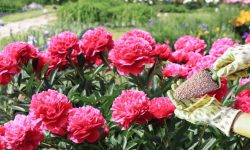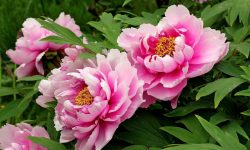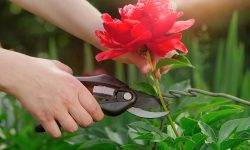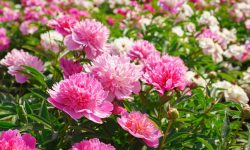Hydrangeas captivate gardeners with their lush, vibrant blooms and elegant foliage. Achieving maximum flowering requires more than just planting; proper fertilization at the right time is essential. Understanding when and how to feed hydrangeas ensures strong stems, healthy leaves, and blossoms that dazzle throughout the season. Mistimed or improper fertilization can hinder growth, reduce flower size, or even prevent buds from forming, making timing and technique crucial for success.
By tailoring nutrient care to each hydrangea variety, gardeners can unlock their full potential. Old-wood bloomers need careful attention to avoid harming buds, while new-wood bloomers thrive with early-season feeding. Combined with healthy soil preparation, consistent watering, and attentive seasonal care, the right fertilization strategy transforms any garden. With patience and knowledge, hydrangeas reward gardeners with abundant, colorful blooms that bring beauty and joy year after year.
Understanding Hydrangea Nutrient Needs
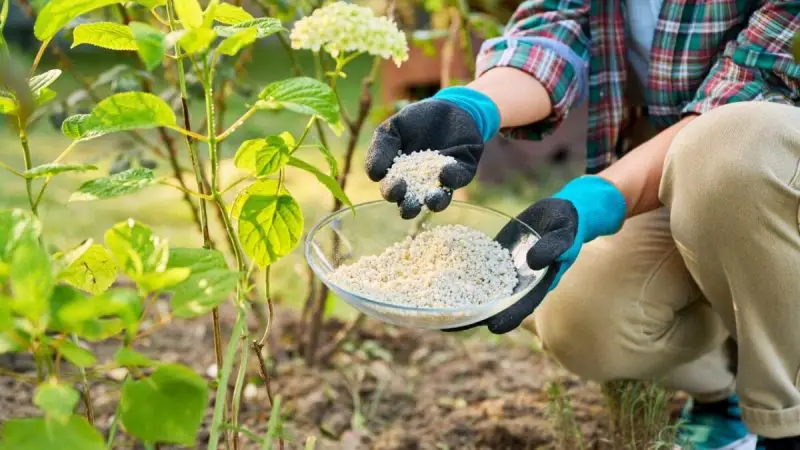
Hydrangeas require a balanced mix of nutrients to thrive and produce vibrant blooms. Nitrogen promotes strong foliage and healthy stem growth, which provides support for heavy flower heads. Phosphorus encourages root development and flower formation, ensuring abundant and well-formed blooms. Potassium strengthens overall plant health, enhancing resistance to disease, drought, and environmental stress. Deficiencies in any of these nutrients can lead to weak stems, fewer flowers, or pale, underdeveloped blooms. Understanding the specific nutrient needs of hydrangeas is essential for timing fertilization and selecting the right type of fertilizer for maximum flowering.
Different hydrangea varieties have unique nutrient requirements. Old-wood bloomers, such as bigleaf and oakleaf hydrangeas, develop buds on stems from the previous year. Fertilizing too late in the season can damage buds, reducing flowering potential. New-wood bloomers, like panicle and smooth hydrangeas, form buds on new growth, making early-season feeding critical for strong growth and abundant flowers. Recognizing the distinction between old-wood and new-wood varieties helps gardeners plan effective fertilization schedules that support both healthy foliage and beautiful blooms.
Soil composition also affects nutrient uptake. Hydrangeas prefer slightly acidic to neutral soil, which allows essential nutrients to be absorbed efficiently. Soil testing can identify deficiencies and guide the selection of fertilizers. Organic amendments, such as compost or well-rotted manure, improve soil structure and nutrient availability. Combining proper soil preparation with tailored fertilization ensures hydrangeas receive the right nutrients at the right time. This approach promotes robust growth, vibrant color, and long-lasting blooms that enhance the garden’s beauty throughout the season.
The Best Time to Fertilize Hydrangeas
Timing is essential for fertilizing hydrangeas to achieve maximum flowering. Feeding too early or too late in the season can reduce bloom quality or damage buds. For most varieties, the best time to apply fertilizer is in early spring when new growth begins. This timing ensures that nutrients are available as plants awaken from dormancy, supporting strong stems, lush foliage, and healthy root development. Proper timing also sets the foundation for abundant blooms later in the season.
Different hydrangea types have unique fertilization schedules. Old-wood bloomers, like bigleaf and oakleaf hydrangeas, should receive nutrients after winter but before buds swell. Fertilizing too late can harm flower buds, resulting in fewer or smaller blooms. New-wood bloomers, such as smooth and panicle hydrangeas, benefit from an early-season application when new shoots emerge, supporting both leaf and flower growth. Understanding the growth cycle of your hydrangea variety ensures fertilizer is applied when it can be most effective.
In addition to early-season feeding, some gardeners apply a second, lighter fertilization in mid-summer. This practice can help sustain flower production and maintain vibrant foliage. However, over-fertilizing or applying late-season nutrients may encourage leafy growth at the expense of blooms or delay plant dormancy. Observing plant health, local climate conditions, and soil nutrient levels allows gardeners to fine-tune fertilization timing. With careful planning, hydrangeas thrive, producing long-lasting, colorful flowers that enhance any garden.
Types of Fertilizers for Hydrangeas
Balanced Fertilizers
Balanced fertilizers provide equal proportions of nitrogen, phosphorus, and potassium, supporting overall plant health. Nitrogen promotes leafy growth, phosphorus encourages strong roots and abundant blooms, and potassium strengthens resilience against disease, drought, and environmental stress. Using a balanced fertilizer ensures hydrangeas receive all essential nutrients for optimal development, promoting both foliage and flower production without overemphasizing one aspect.
Applying a balanced fertilizer in early spring helps prepare hydrangeas for the growing season and promotes lush foliage while preparing flower buds for healthy blooms. Gardeners should follow the recommended dosage on packaging to avoid over-fertilization, which can lead to excessive leaf growth and fewer flowers. Combining balanced fertilizers with organic amendments, such as compost or well-rotted manure, improves soil structure, enhances nutrient availability, and supports long-term plant health. Consistent moderate feeding is more effective than infrequent heavy applications, maintaining vibrant, resilient hydrangeas throughout the season.
High-Phosphorus Fertilizers
High-phosphorus fertilizers focus on stimulating flower production. Phosphorus is essential for bud development, ensuring vibrant, well-formed blooms. These fertilizers are especially useful for hydrangeas that tend to produce large foliage at the expense of flowers. Applying phosphorus-rich fertilizer encourages a higher number of blossoms and improves flower quality while maintaining healthy plant structure.
Gardeners typically use high-phosphorus fertilizers at the beginning of the growing season or when buds start to form. Care should be taken not to over-apply, as excessive phosphorus can harm soil microorganisms and reduce overall plant vigor. Pairing high-phosphorus fertilizer with consistent watering and proper mulching enhances nutrient absorption, supports root health, and maintains balanced growth. This approach helps hydrangeas produce abundant, long-lasting flowers, creating stunning garden displays while sustaining strong, resilient plants.
Organic Fertilizers
Organic fertilizers, such as compost, well-rotted manure, or fish emulsion, provide slow-release nutrients while improving soil structure and promoting microbial activity. They enhance water retention and gradually supply nitrogen, phosphorus, and potassium to support steady growth and sustained flowering. Organic options are environmentally friendly and reduce the risk of chemical burn to roots, making them safer for long-term plant health.
Applying organic fertilizers in early spring and mid-season encourages continuous growth and vibrant blooms. Incorporating them into the soil ensures nutrients are readily available for root absorption. Organic fertilizers also help maintain slightly acidic soil conditions preferred by hydrangeas, supporting nutrient uptake and plant vitality. Combined with proper watering, mulching, and seasonal care, organic feeding promotes strong stems, lush foliage, and abundant, colorful flowers, making them an excellent choice for gardeners seeking sustainable, effective practices.
How to Apply Fertilizer to Hydrangeas
Applying fertilizer correctly is essential to maximize hydrangea growth and flowering. Begin by reading the fertilizer label to determine the appropriate amount for your plant size. Over-fertilization can cause excessive leafy growth at the expense of blooms, while under-fertilization may result in weak stems and fewer flowers. Distribute the fertilizer evenly around the base of the plant, staying a few inches away from the crown to prevent root burn and ensure even nutrient absorption.
Watering after applying fertilizer is crucial to help nutrients penetrate the soil and reach the root system. For granular fertilizers, lightly work the product into the topsoil, then provide a thorough watering. Liquid fertilizers should be applied according to manufacturer instructions, ensuring even coverage of soil and roots. Applying fertilizer during calm, dry weather reduces the risk of runoff or uneven distribution. Regular monitoring of plant health and growth allows gardeners to adjust fertilization practices if necessary, ensuring hydrangeas remain vibrant throughout the season.
Timing also plays a key role in effective application. For early-season feeding, apply fertilizer when new shoots begin to emerge, supporting strong stem and leaf growth. Mid-season applications can help maintain flower production and sustain vibrant foliage. Avoid late-season feeding, which may encourage leafy growth instead of flowers or delay dormancy. Combining correct application methods, proper timing, and consistent monitoring ensures that hydrangeas receive the nutrients they need for robust growth, long-lasting blooms, and an overall healthy, thriving appearance.
Common Fertilization Mistakes to Avoid
Over-Fertilizing Hydrangeas
One of the most common mistakes gardeners make is over-fertilizing hydrangeas. Applying too much fertilizer can burn the roots, resulting in weakened plants and excessive leafy growth. While the plant may appear lush, flower production often decreases, and the risk of disease and pest infestations increases. Over-fertilization disrupts the natural balance of nutrients in the soil, which can reduce overall plant vigor and limit long-term blooming potential.
To prevent over-fertilization, always follow the recommended amounts on fertilizer packaging. Consider conducting a soil test to determine existing nutrient levels before adding extra fertilizer. A moderate approach ensures hydrangeas receive just enough nutrients to encourage healthy root and shoot growth while promoting vibrant blooms. Regular, balanced feeding is more effective than occasional heavy applications, helping plants thrive throughout the growing season without compromising flower quality or plant health.
Fertilizing at the Wrong Time
Applying fertilizer at the wrong time can negatively affect hydrangea growth and blooming. Feeding too early in winter may stimulate new growth that is vulnerable to frost damage, while fertilizing too late in the season can encourage leafy growth at the expense of flowers. Both situations reduce overall flowering potential and may compromise plant health during seasonal transitions.
To avoid this issue, understand the growth cycle of your hydrangea variety. Old-wood bloomers should be fertilized in early spring before bud swelling, while new-wood bloomers benefit from early-season feeding as new shoots emerge. Observing local climate conditions and seasonal changes ensures that nutrients are applied when plants can fully utilize them, supporting strong stems, healthy foliage, and abundant, vibrant flowers throughout the season.
Neglecting Soil Health
Neglecting soil health is another frequent mistake that limits the effectiveness of fertilization. Poor soil structure, low organic matter, or incorrect pH levels can prevent hydrangeas from absorbing nutrients efficiently, reducing flower quality and plant vigor. Even with proper fertilizer application, unhealthy soil can hinder growth and make plants more susceptible to stress, disease, and pests.
Maintaining soil health through compost, organic amendments, and pH adjustments improves nutrient availability and water retention. Regularly testing soil and amending it as needed ensures that fertilizers provide maximum benefit. Combining proper fertilization with well-prepared, healthy soil allows hydrangeas to develop strong roots, abundant foliage, and vibrant blooms, creating a resilient, long-lasting garden display.
Fertilizing Hydrangeas After Pruning
Pruning hydrangeas is essential for shaping the plant and promoting healthy growth. After pruning, plants require additional nutrients to recover and support new shoots. Fertilizing at this stage helps stimulate root development, encourages strong stem growth, and prepares the plant for abundant flowering later in the season. Proper post-pruning fertilization ensures that hydrangeas maintain vitality and bloom potential even after significant branch removal.
Timing and type of fertilizer are critical after pruning. Apply a balanced or high-phosphorus fertilizer immediately after pruning to support new growth and flower bud formation. For organic gardeners, compost or well-rotted manure can provide a gentle, slow-release nutrient boost. Avoid over-fertilization, as excessive nutrients may encourage leafy growth at the expense of flower development. Regular watering combined with post-pruning fertilization ensures nutrients are absorbed efficiently, promoting rapid recovery and healthy plant structure.
Additional care after fertilization includes monitoring plant health and adjusting feeding if necessary. Mulching around the base of the plant helps retain moisture and regulate soil temperature, which is particularly important for newly pruned hydrangeas. Observing growth patterns allows gardeners to identify nutrient deficiencies or stress early. By combining careful pruning, timely fertilization, and attentive seasonal care, hydrangeas thrive, producing strong stems, vibrant foliage, and abundant, colorful flowers that enhance any garden display.
Adjusting Fertilization Based on Soil Type
Soil type plays a crucial role in how hydrangeas absorb nutrients and respond to fertilization. Sandy soils drain water quickly and often require more frequent feeding to maintain consistent nutrient levels. Without proper supplementation, plants may develop weak stems, pale leaves, and reduced blooms. Conversely, clay soils retain water and nutrients longer but can become compacted, making it harder for roots to access essential elements. Understanding your soil type allows gardeners to tailor fertilization schedules effectively, ensuring hydrangeas receive the right nutrients at the right time for optimal growth and flowering.
Amending soil with organic matter can significantly improve nutrient retention and soil structure. Adding compost or well-rotted manure to sandy soils helps hold moisture and nutrients, reducing the frequency of fertilization. For clay soils, incorporating organic matter improves drainage and prevents root suffocation while allowing nutrients from fertilizers to be absorbed more efficiently. Mulching around hydrangeas further conserves soil moisture, moderates temperature fluctuations, and gradually enriches the soil as it decomposes. These combined strategies create a healthy environment for roots to thrive.
Regular monitoring of soil health is essential to maintain balanced nutrition. Conducting periodic soil tests can reveal deficiencies in nitrogen, phosphorus, potassium, or micronutrients. Adjusting fertilization based on test results ensures hydrangeas receive the exact nutrients they need without over- or under-feeding. By understanding soil characteristics and adapting fertilization practices accordingly, gardeners can support robust stem growth, vibrant foliage, and long-lasting blooms, making their hydrangeas a striking feature in any garden throughout the growing season.
Fertilization Tips for Different Hydrangea Varieties
Different hydrangea varieties have unique fertilization needs based on their growth and flowering patterns. Bigleaf (macrophylla) and oakleaf (quercifolia) hydrangeas bloom on old wood, meaning their flower buds form on stems from the previous year. Applying fertilizer too late in the season can harm these buds, reducing flower production. Early spring feeding, before new growth begins, provides the necessary nutrients to support both foliage and flower development without damaging buds.
Panicle (paniculata) and smooth (arborescens) hydrangeas bloom on new wood, forming flowers on shoots from the current season. These varieties benefit from early-season fertilization once shoots start to grow. Providing balanced or high-phosphorus fertilizer at this stage encourages strong stems, lush foliage, and abundant flower clusters. Monitoring growth patterns helps gardeners adjust feeding schedules to match the plant’s natural development, maximizing bloom potential.
It is also important to consider soil and environmental conditions when fertilizing different varieties. Acidic soils may affect nutrient availability, particularly phosphorus and micronutrients, which are critical for flower formation. Amending soil with compost or organic matter can improve nutrient absorption and maintain healthy soil structure. By understanding the unique needs of each hydrangea type and tailoring fertilization accordingly, gardeners can ensure vibrant, long-lasting blooms, strong growth, and resilient plants that enhance the garden’s beauty throughout the season.
Organic vs. Synthetic Fertilizers: Choosing What’s Best
Choosing between organic and synthetic fertilizers depends on gardener preference, soil health, and plant needs. Organic fertilizers, such as compost, well-rotted manure, or fish emulsion, provide slow-release nutrients while improving soil structure and stimulating beneficial microbial activity. They enhance water retention, support root development, and gradually supply nitrogen, phosphorus, and potassium to hydrangeas, promoting steady growth and sustained flowering throughout the season.
Synthetic fertilizers offer precise nutrient ratios and rapid availability, making them ideal for quick results or correcting deficiencies. They allow gardeners to target specific nutrients, such as phosphorus for flower production or nitrogen for leafy growth. However, excessive use can lead to nutrient imbalances, root burn, or environmental runoff. Using synthetic fertilizers in combination with proper watering and soil monitoring helps ensure plants absorb nutrients effectively without causing harm.
Many gardeners find that combining organic and synthetic approaches provides the best results. Organic matter improves soil long-term, while synthetic supplements correct immediate deficiencies. Timing is important: apply slow-release organic fertilizers in early spring and mid-season, and use synthetic fertilizers as a short-term boost when needed. By understanding the strengths and limitations of both types, gardeners can tailor fertilization strategies to support healthy, resilient hydrangeas with vibrant, long-lasting blooms, while maintaining soil health and sustainable garden practices.
FAQ About When to Fertilize Hydrangeas
When is the best time to fertilize hydrangeas?
The optimal time to fertilize hydrangeas is early spring when new growth begins. Old-wood bloomers should be fed before buds swell, while new-wood bloomers benefit from feeding once shoots appear. Proper timing ensures strong stems, healthy foliage, and abundant, vibrant blooms throughout the season.
How often should I fertilize hydrangeas?
Frequency depends on soil type and fertilizer used. Slow-release fertilizers generally require one to two applications per season, while liquid fertilizers may be applied every 4–6 weeks. Observing plant growth and bloom development helps determine the ideal schedule, ensuring consistent nutrition without over-fertilization.
Can I use organic fertilizer for hydrangeas?
Yes, organic fertilizers such as compost, well-rotted manure, or fish emulsion are excellent for hydrangeas. They provide slow-release nutrients, improve soil structure, and encourage beneficial microbial activity. Organic feeding promotes steady growth, vibrant blooms, and sustainable long-term plant health.
What happens if I over-fertilize my hydrangeas?
Over-fertilizing can cause excessive leaf growth at the expense of flowers. It may also burn roots, weaken stems, and increase susceptibility to disease. Always follow recommended amounts and consider soil tests to avoid nutrient imbalances while supporting healthy growth and abundant blooms.
Should I fertilize after pruning hydrangeas?
Yes, fertilizing after pruning helps hydrangeas recover and supports new shoot development. Use a balanced or high-phosphorus fertilizer to stimulate root growth, encourage strong stems, and promote flower bud formation, ensuring vibrant blooms later in the season.
Conclusion
Proper fertilization is key to keeping hydrangeas healthy, vibrant, and full of blooms. Understanding soil type, choosing the right fertilizer, and timing applications according to each variety’s needs ensures optimal growth and flower production. Avoid common mistakes such as over-fertilizing or feeding at the wrong season to protect both plant health and bloom quality. Combining careful observation, seasonal care, and balanced nutrient management allows hydrangeas to thrive year after year. With these expert tips, gardeners can enjoy lush foliage, abundant flowers, and stunning garden displays that last throughout the growing season.

